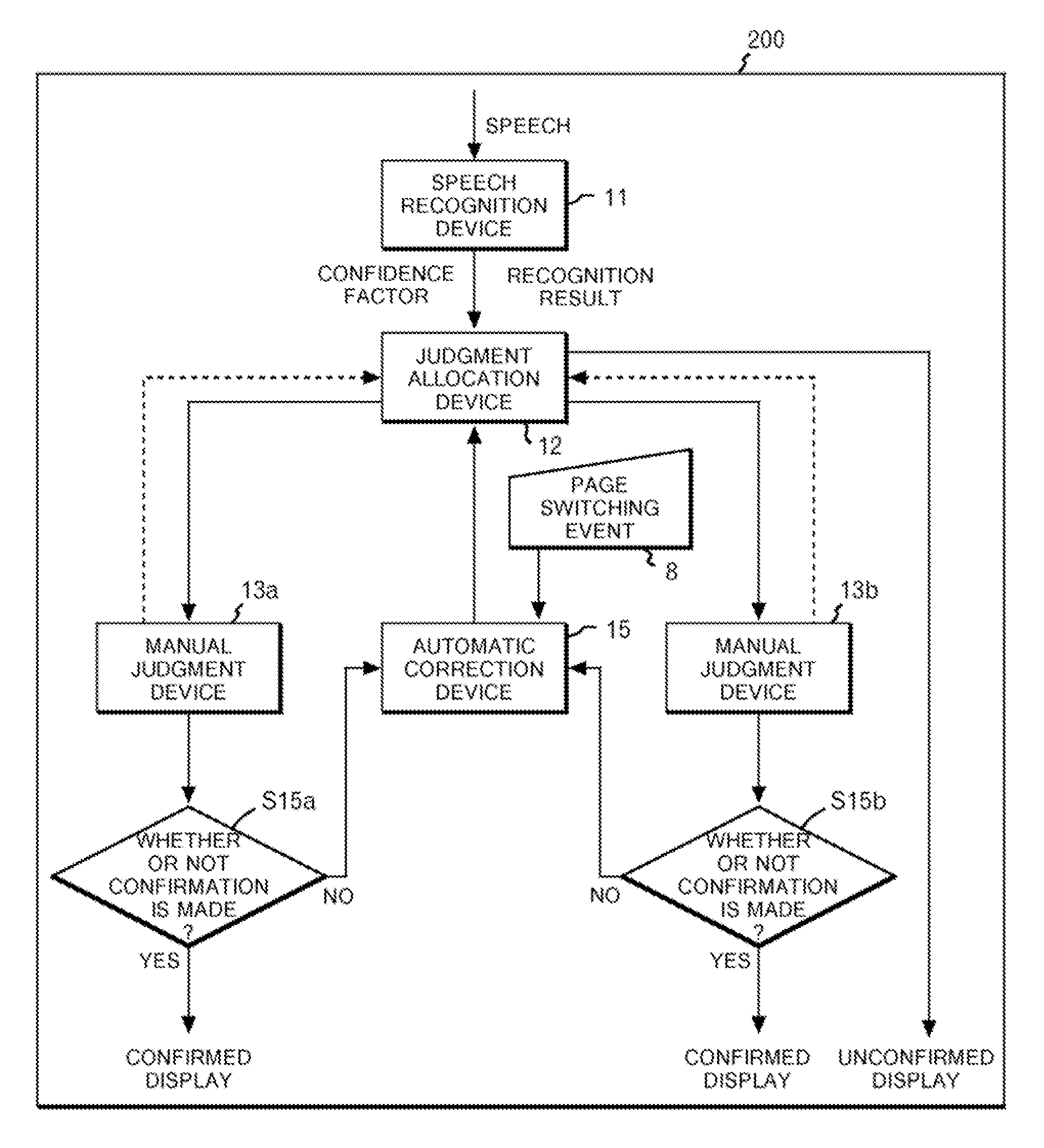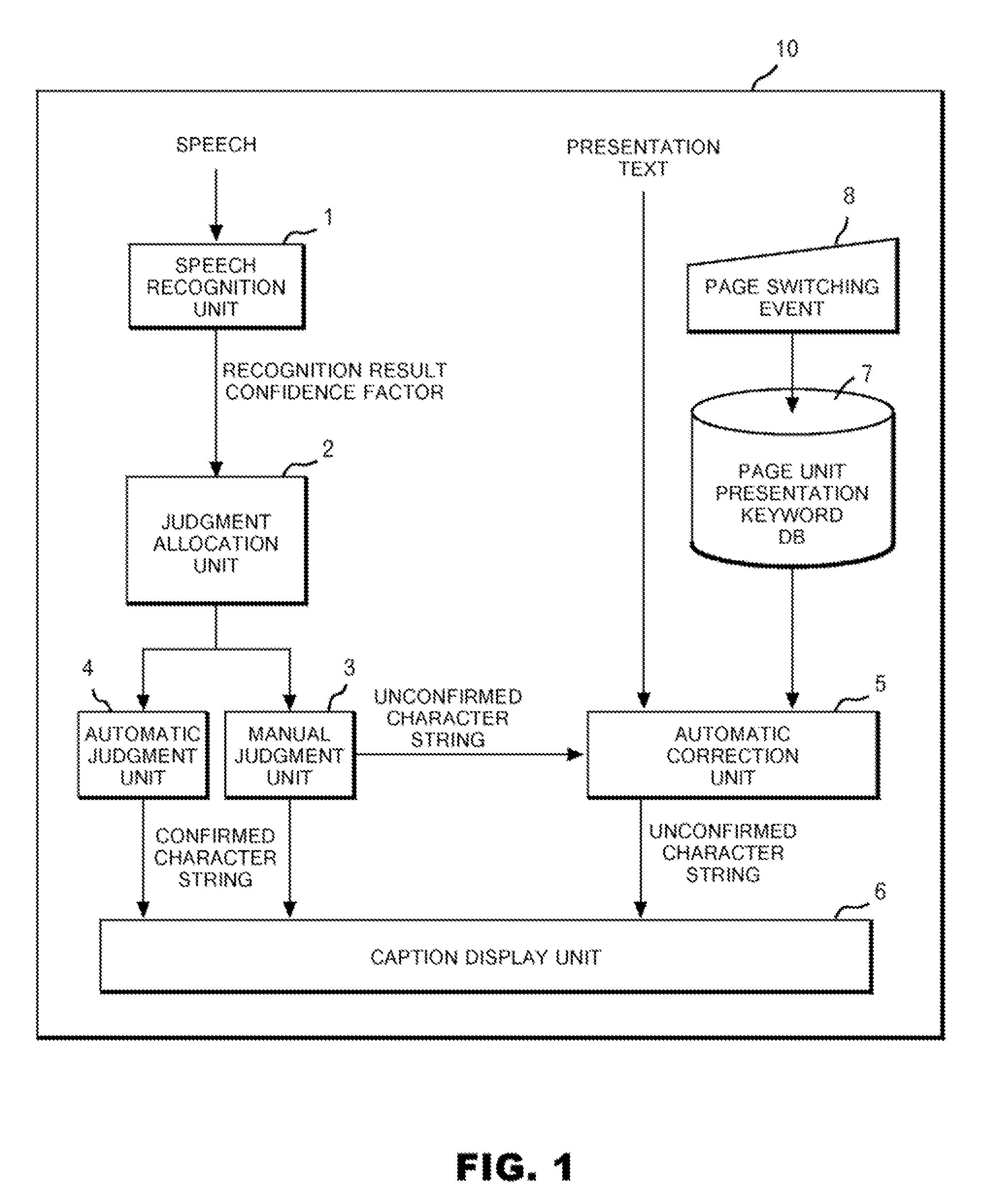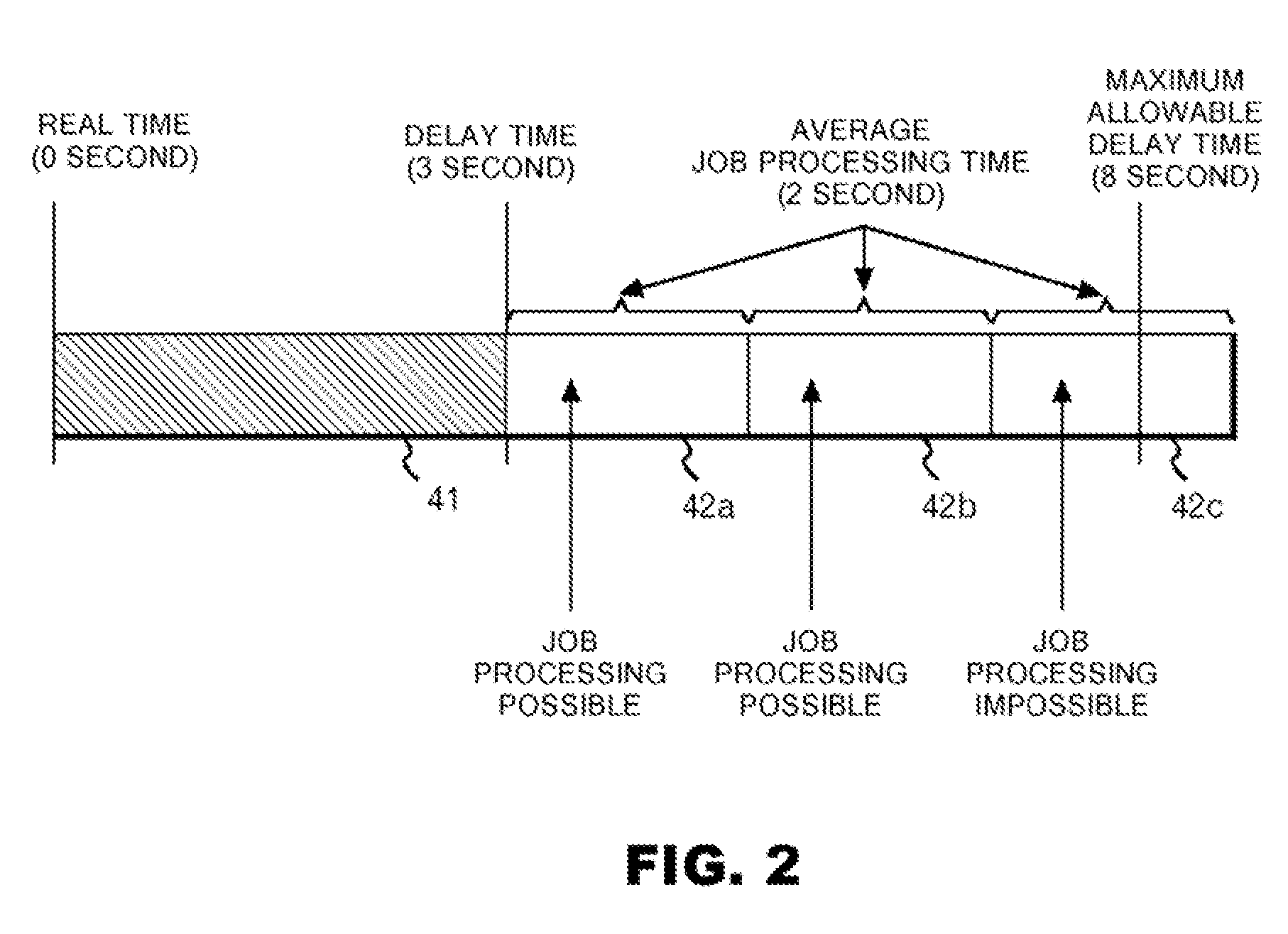Correction of a caption produced by speech recognition
a technology of speech recognition and correction device, which is applied in the field of caption correction device, can solve the problems of high cost per unit time, inability to obtain desired recognition rate in reality, and the unlikely spread of manual captioning, so as to improve the accuracy of character strings, the effect of reducing the cost of manual captioning
- Summary
- Abstract
- Description
- Claims
- Application Information
AI Technical Summary
Benefits of technology
Problems solved by technology
Method used
Image
Examples
example 1
Method for Displaying Confirmed and Unconfirmed Character Strings
[0075]FIG. 9 shows an example of the present invention. In FIG. 9, an image of a speaker (presenter) is displayed on a window screen denoted by reference numeral 64. The screen 64 shows a result of recognition of speech made by the speaker. Additionally, a window screen 60 snows results each obtained by manual or automatic check performed by the manual judgment device 13 on recognition character strings which is obtained by the speech recognition. However, confidence factors of the speech recognition may be hidden. In order to display whether the check by the manual judgment device 13 is confirmed or not confirmed, a checker performs confirmation judgment as indicated by S61. The character string judged to be incorrect is set to be an unconfirmed character string and is subjected to matching in a step 62 (the automatic correction device 15). As a result of the matching, the corrected character strings are displayed on ...
example 2
Manual Operation in Manual Judgment Device 13
[0076]An example of a UI (User Interface) for a manual operation by a user in the manual judgment device 13 will be described here.
[0077]1) A key operation (or a mouse click and the like) is performed in any event. For example, Enter key is pressed when a target character string is correct and Space key is pressed when the target character string is incorrect.
[0078]2) Selection is carried out as in the case of 1), but a time-out period is provided. When none of the keys is pressed within the period, default is forcibly selected. Since the recognition result is usually correct in many cases, improvement in performance can be expected by setting the default to be correct.
example 3
Judgment Allocation Device 12
[0079]Conditions of the automatic judgment are set as follows. The more the confidence factor is different from the average, the more likely the automatic judgment is to be carried out in consideration of allowable delay time, average job time and elapsed time. In addition, as the allowable delay time is running out, the confidence factor close to the average is also more likely to be allocated to the automatic judgment.
[0080]Description will be given in detail of a calculation method in the case where a normal distribution is assumed for a confidence factor Ci. A probability density function f(x) of the normal distribution where an average and a variance are represented respectively by μ and σ, is given by the following expression,
[0081]f(x)=1σ2πe-(x-μ)22σ2Expression2
[0082]Based on the expression described above, a probability that a random variable X becomes equal to or less than α is given by the following expression,
[0083]P(X≤a)=∫-∞af(x)ⅆx...
PUM
 Login to View More
Login to View More Abstract
Description
Claims
Application Information
 Login to View More
Login to View More - R&D
- Intellectual Property
- Life Sciences
- Materials
- Tech Scout
- Unparalleled Data Quality
- Higher Quality Content
- 60% Fewer Hallucinations
Browse by: Latest US Patents, China's latest patents, Technical Efficacy Thesaurus, Application Domain, Technology Topic, Popular Technical Reports.
© 2025 PatSnap. All rights reserved.Legal|Privacy policy|Modern Slavery Act Transparency Statement|Sitemap|About US| Contact US: help@patsnap.com



